Series IT Find 3/2023: Do you know your way around?
Come with us as we travel back in time: How familiar are you with old analog telephones and what do you personally associate with these devices? Tell us your story!
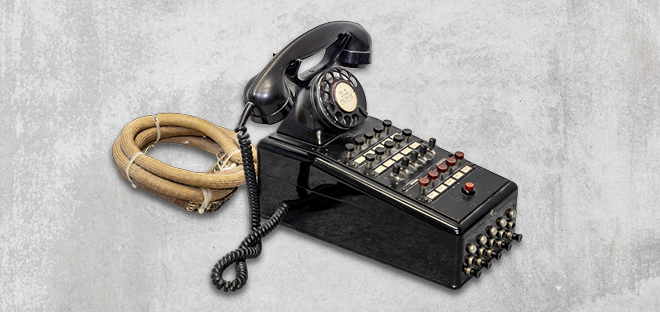
You need at least two wires to make a phone call. This big old analog telephone, as shown in the picture, requires 66 wires
Cable pair / two-wire system
To make a call, you need at least two wires on the telephone, which are referred to as a «line pair». This simple two-wire system enables communication between two telephones.
In old telephones (and also in many modern telephone systems), the wires used to transmit signals are often referred to as «cores»: A single electrical conductor or wire that is usually made of copper.
Cores
The terms «Tip» and «Ring» originate from the time of manual telephone exchanges, where the telephone plugs were plugged into sockets labeled accordingly. Both terms are still used in the telecommunications industry to identify the corresponding wires in a telephone cable (see also Wikipedia «tip and ring»)
- Core 1: This wire is also referred to as a «tip» or «T» and is usually marked with a color or color code to distinguish it from other wires. It is used to transmit the audio signal sent by the telephone to the communication system.
- Core 2: This wire is also referred to as a «ring» or «R» and is also color-coded. It transmits the audio signal received from the communication system back to the telephone so that the caller can hear the other party’s voice.
- The colors of the wires play a major role in the routing area and have a certain sequence that must be followed.
The two-wire telephone system uses analog signal transmission, whereby the audio signals are converted into electrical voltages and transmitted via the two wires. The transmission takes place through continuous changes in the voltages that represent the spoken voice as sound vibrations.
An important feature is the electrical balance between the two cores. The aim is for both cores to have a constant electrical voltage so as to minimize noise and interference.
By twisting the wires into a cable pair electromagnetic interference (EMI) between the wires is reduced, electrical balance is maintained and signal integrity is improved. Twisting is a special technique in which two or more cable wires in a cable or cable pair are twisted together.
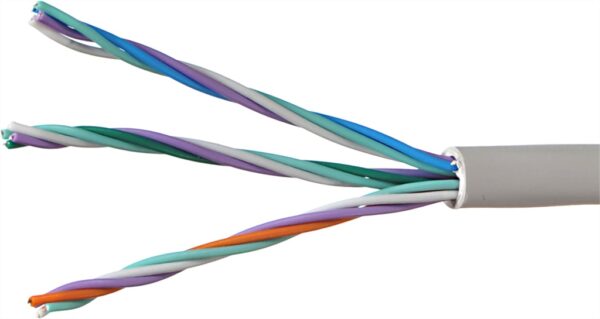
Example of twisted colored wires
Since transmitting signals over longer distances can weaken them, signal amplifiers or amps must be used in a two-wire telephone system to amplify the audio signal and ensure clear communication.
Analog end devices

Model 50 desk phone (left) and Model 70 desk phone (right)
In a two-wire telephone system, the end devices connected are analog, such as traditional rotary dial telephones. These end devices convert the user’s speech into electrical signals and transmit them via the two wires.
The connection between the telephones is made in the exchange. When a call is initiated, the audio signal is transmitted from the telephone to an exchange or switchboard, where the call is routed and connected to the required phone line.
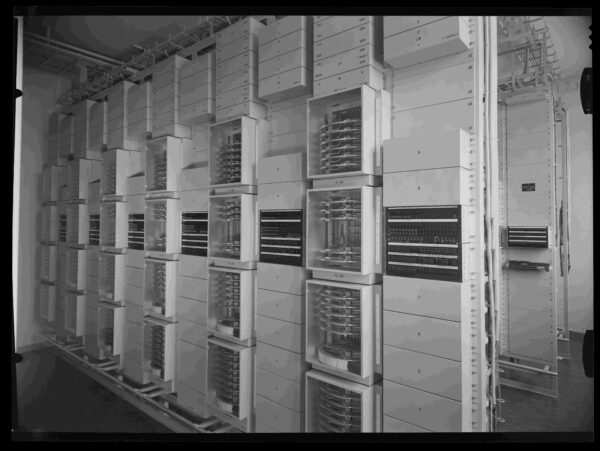
Telephone system at ETH Zurich, photographer: Unknown, Museum for Communication in Bern, dated 23.01.1952
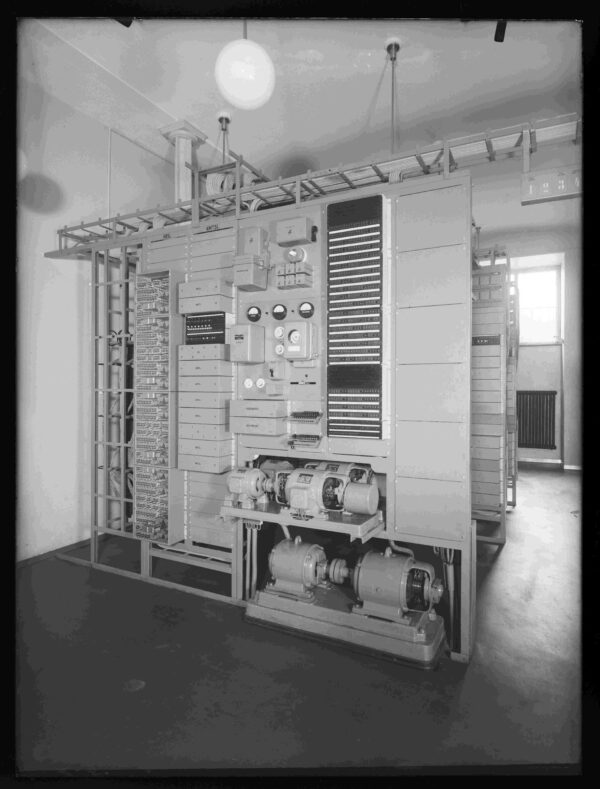
Telephone set, in-house machine at ETH Zurich, photographer: Unknown, Museum of Communication in Bern, dated 29.10.1935, title / object designation Telephone system, in-house machine ETH Zurich
Our history
René Müller, employee at ITS INFRA, was the trigger for our IT find quiz. We were on the lookout for old telephones for the inside|out newsletter, 29th issue – December 2022. René is interested in old telephones and has been able to save various models from being disposed of by Swisscom. «It’s a bit of nostalgia; something you can still hold in your hands. If something went wrong with a phone back then, you could simply take it apart and use the circuit diagram – every phone used to have one – to work out where it needed repairing». Thanks to René for the loan and his support.
ETH history
Analog telephones were probably in use at ETH from around 1958. You need at least 2 wires per telephone. And depending on the telephone, there were cables with 2, 4, 10, 20 or many more wires.
Fun fact: Miles and miles of cables were laid. Some of the cables are still in situ at ETH. They are needed in places because old telephones are still connected. Most of the cables are now redundant, but cannot be removed as some of them are still in use.
Your story
What do you associate with these old telephones? Do you still have one, or perhaps any old pictures of them, for example, being used at ETH? We look forward to your stories and your comments on this post. And if you have any IT finds for our inside|out section, please get in touch with us.
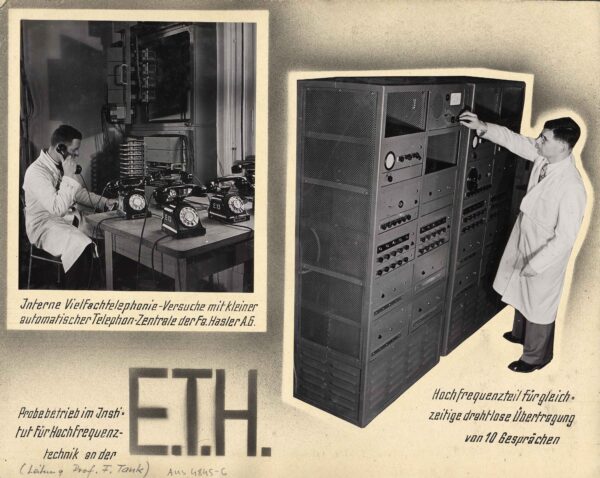
Photo collage, caption: Multiple telephony tests with a small automatic telephone exchange from company Hasler AG. High-frequency part for transmitting ten simultaneous wireless calls, dated 1941: Source: E-Pics image archive, ETH Library
We found almost nothing about the history of telephones at ETH on the ETH website. If you have any further information or pictures, please feel free to contact us. Other interesting links on the subject of telephony:
- Old antique telephones (TelephonMuseum collection)
- «The introduction of the telephone in Switzerland» (TelphonMuseum)
- Short films: Telephone exchange, phone apparatus etc. (TelephonMuseum)
- «175 years ago: Bell, March and the telephone» (IT history inside IT)
- History of the Museum of Communication (Website)
History / ITS & ETH make history
- Previous IT finds to guess: https://ethz.ch/staffnet/en/organisation/departments/it-services/history/it-puzzle.html
- More on the ITS & ETH story in the ITS Blog and on the ETH website
Contact us
Your inside|out editorial team, Sabine Hoffmann, Head of PR & Communications
- https://ethz.ch/staffnet/en/organisation/departments/it-services/inside-out.html
- insideout@id.ethz.ch
erstellt am
in News


